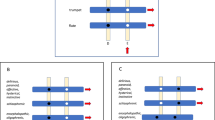Abstract
This article presents the thesis that the schema of the Seven Deadly Sins was originally a pastoral diagnostic system that helped spiritual directors, monks, and priests, the psychotherapists of their day, to make differential diagnoses and prescribe treatment plans for the troubled faithful. This essay describes the work of Evagrius Ponticus, whose list of eight “evil thoughts” was one of the forerunners of the Seven Deadly Sins, and then goes on to describe the subsequent codification of the Seven Deadly Sins schema. The author speculates about what a fully developed diagnostic decision tree based on the Seven Deadly Sins with corresponding prescribed interventions might look like. The author then draws parallels to the recently released DSM-5, in particular to personality disorders and addictions. Finally, this essay offers a brief case to illustrate the differences in how a particular clinical entity might be viewed through the lenses of the DSM-5 and the Seven Deadly Sins.
Similar content being viewed by others
Notes
Translator John Eudes Bamberger argues that this phrase is the best translation of Evagrius’s Greek, given the connotation the words had at the time.
For example, Lucifer was often associated with the sin of pride.
Externalizing the problem has emerged in narrative therapy as a helpful and important concept. See Narrative Means (White & Epston 1990, pp 38–76).
Evagrius’s list and associated spiritual writings are more popular in Eastern Orthodoxy, whereas Gregory’s list is more widely know and employed in Catholicism.
For example, Wayne Oates examined personality disorders from a religious or theological perspective in Behind the Masks (Oates 1987).
I recognize that linking vice to personality disorders is a part of a larger contemporary discussion of the relationship between sin and psychopathology. For the most part, that larger discussion is beyond the scope of this article, but hopefully might make a modest contribution to it.
This thesis is developed more fully in my book, Ancient Sins . . . Modern Addictions (Sullender 2013).
I have found Joseph Ciarrocchi’s (Ciarrocchi 1999) discussion of the paradox of self-esteem issues in addiction helpful in illustrating how pride might function as the “chief issue” in the addiction personality.
This brief examination of the schema of the Seven Deadly Sins reminds us of the powerful role that culture plays in shaping our perception and understanding of psychopathology. Culture shapes our very ability to conceptualize and classify ailments.
References
American Psychiatric Association. (2013). Diagnostic and statistical manual of mental disorders (5th ed.). Washington, DC: American Psychiatric Association.
Aquinas, T. (1274/1968). Summa theologica. New York: McGraw-Hill.
Ciarrocchi, J. W. (1999). Spirituality for high and low rollers: The paradox of self-esteem in gambling recovery. In M. R. Jordan & O. J. Morgan (Eds.), Addiction and spirituality: A multidisciplinary approach (pp. 173–192). St. Louis, MO: Chalice.
Evagrius of Pontus (c. 395/2009). Talking back: A monastic handbook for combating demons. (D. Brakke, Trans.). New York: Cistercian.
Evagrius Ponticus. (c. 390/1981). The praktikos and chapters on prayer. (J. E. Bamberger, Trans.). Kalamozoo, MI: Cistercian.
Gregory the Great. (590/2007). The book of pastoral rule. (G. Demacopoulos, Trans.). Yonkers, NY: St. Vladimir’s Seminary Press.
Oates, W. (1987). Behind the masks: Personality disorders in eligious Behavior (p. 1987). Philadelphia: Westminster.
Pruyser, P. W. (1976). The Minister as Diagnostician: Personal Problems in Pastoral Perspective. Philadelphia: Westminster John Knox Press.
Sullender, R. S. (2013). Ancient Sins.. Modern Addictions: A Fresh Look at the Seven Deadly Sins. Eugene, OR: Wipf and Stock.
White, M., & Epston, D. (1990). Narrative Means to Therapeutic Ends. New York: Norton.
Author information
Authors and Affiliations
Corresponding author
Rights and permissions
About this article
Cite this article
Sullender, S. The Seven Deadly Sins as a Pastoral Diagnostic System. Pastoral Psychol 64, 217–227 (2015). https://doi.org/10.1007/s11089-014-0602-8
Published:
Issue Date:
DOI: https://doi.org/10.1007/s11089-014-0602-8




